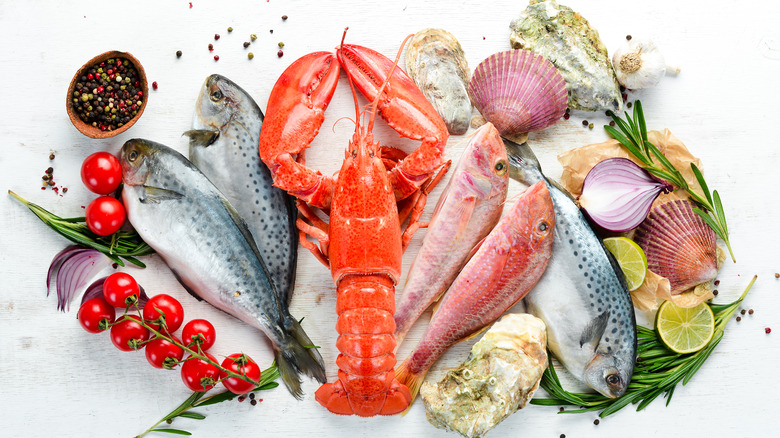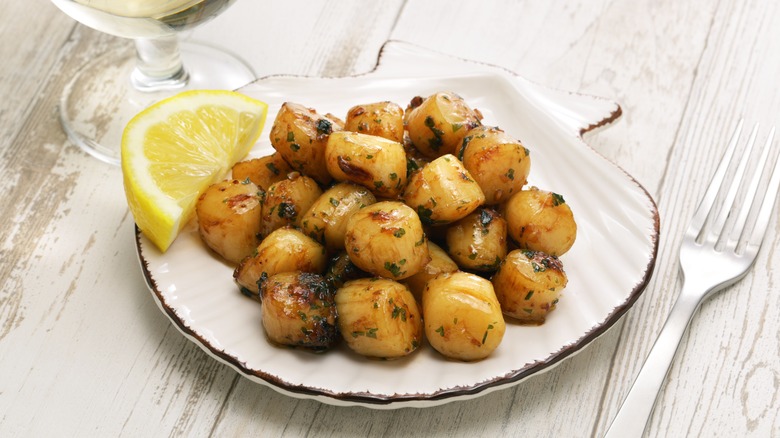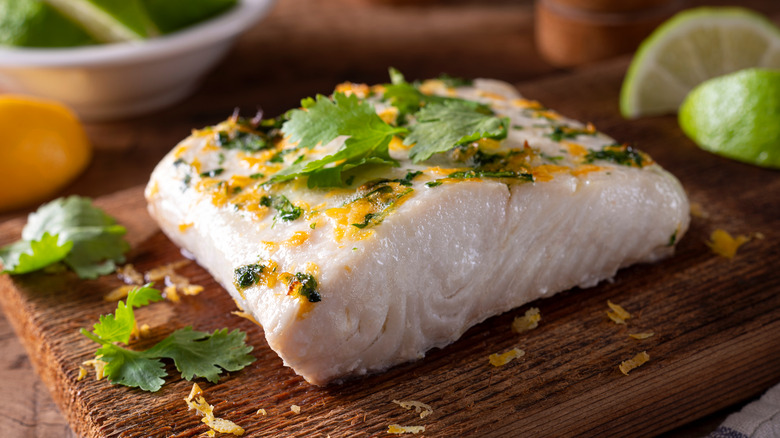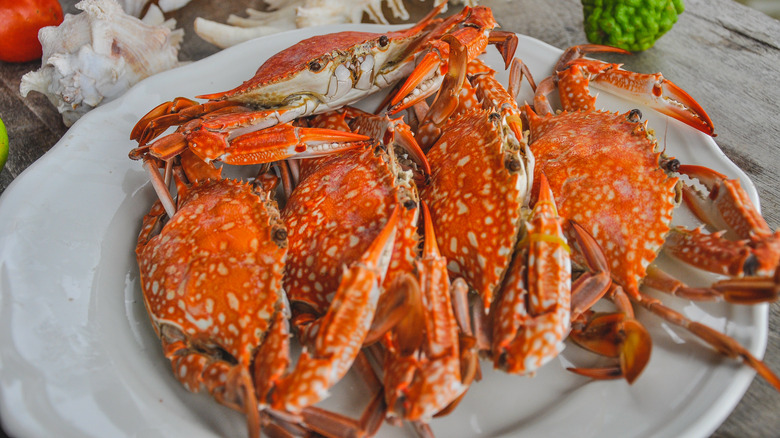The Seafood That's At Its Freshest During The Fall
Old Bay may be what first comes to mind when you hear seafood and season. But just like produce, different types of seafood have different peak moments when they're best consumed and several factors affect what critters end up on our plates and when.
According to Northeast Seafood, wild seafood migrates with water temperatures and moon cycles, affecting when we have access to different varieties. Government regulations on what can and cannot be fished and when also dictate what's on the menu. Safety concerns have historically factored in as well, with the popular belief that one should only eat oysters in months that contain "r" coming to mind. But advances in transportation and refrigeration methods have mitigated the bacteria risk and rendered the saying nearly obsolete, per Southern Living.
Just like you can now enjoy a pineapple in the middle of February, you can access many types of seafood year-round thanks to farming and flash-freezing. But there are advantages to sticking with the seasons and what's fresh and available: The quality, taste, and texture will be better, and your wallet will thank you.
A small window for bay scallops
October happens to be National Seafood Month, per NOAA Fisheries, so it may come as no surprise to learn the ocean is ripe with fresh delights in the fall. One of the top varieties to look out for on menus and at mongers are sweet bay scallops, according to Mark Usewicz, co-owner and head fishmonger of Mermaid's Garden. Usewicz revealed on Martha Stewart's website that sweet bay scallops have a small window of peak-ness and are perfect for an autumn ceviche.
There are two main types of scallops — sea and bay. Sea scallops are around two inches with a hearty texture and briny bite to them. Bay scallops are small, about a half inch, and are more sweet than briny, and more tender than tough, when compared to their counterparts. Both varieties cook quickly and don't need much to bring out their buttery, decadent flavor (via Boston Sword & Tuna).
Peconic scallops, which hail from Long Island, have seen a die-off in recent years. Research suggests it's due to higher water temperatures and parasites (via East End Beacon). Peconic scallops live for two years and can only be harvested during the latter half of their lifespan, leaving a very small window for fishermen.
Scallop researchers are actively working to breed a species that can withstand both warmer temperatures and parasitic infections and have high hopes for future spawning seasons.
A popular flat fish
Pacific halibut has its time in the spotlight once summer salmon season comes to a close, per Martha Stewart's website. Halibut are a massive, flat fish that can weigh up to 500 pounds and grow more than eight feet in length (via NOAA). They can live up to 55 years and don't reach reproductive maturation until they're around 10-years of age. Pacific halibut is a popular fish amongst fishermen, both commercial and sport, and is tightly regulated. The majority of the population is found near Alaska with almost 25 million pounds, worth around $100 million, caught commercially each year.
Pacific halibut is a lean, white, and firm fish with a mild taste. It tends to take on others flavor, making it a versatile dinner choice. Due to its lower fat content, it's best suited for moist heat cooking methods such as poaching or steaming, but can also be pan-seared, grilled, or baked if you stay on top of the temperature and avoid overcooking, per Sizzlefish.
Blue crabs are meatier
Blue crabs fatten up in the fall in preparation for their lazier winters, as the website of Martha Stewart explained, making early fall the best time of year to enjoy the crustacean. In addition to their preparation for dormancy, their molting plays into their fall pinnacle. Blue crabs shed their shells multiple times and need time to grow into each new home. Come fall, they're closer to filling out their larger shell — the darker its bottom, the more meat you will find, per the Washingtonian. Preparing your fall crab feast is easy. Just steam or boil the little guys until that blue shell turns red and enjoy the tender, sweet meat on its own or dipped in your choice of sauce.
Your location does come into play when choosing seafood for the autumn. Whether you're by the Pacific Ocean or Florida panhandle will dictate what's in the water. Best bet is to buy locally and ask questions.



